THERE ARE MANY TYPES AND STYLES OF CROSSES TO BE SEEN
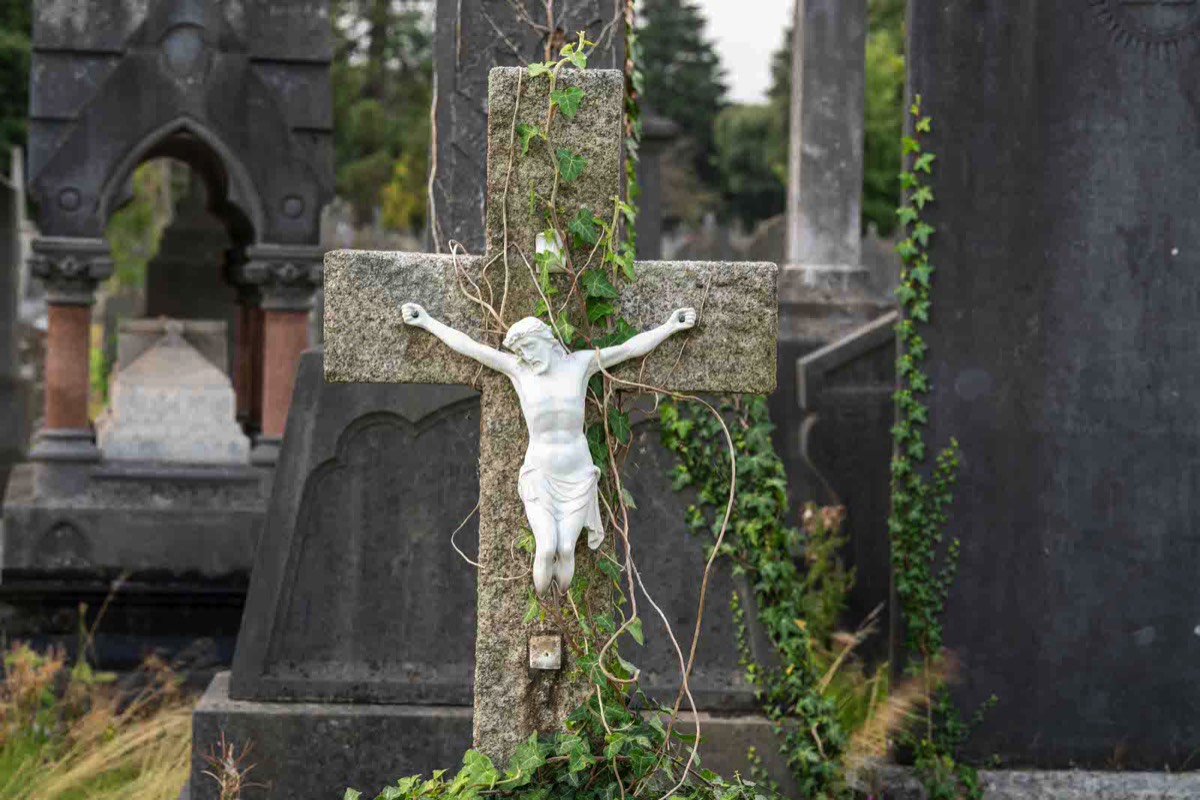
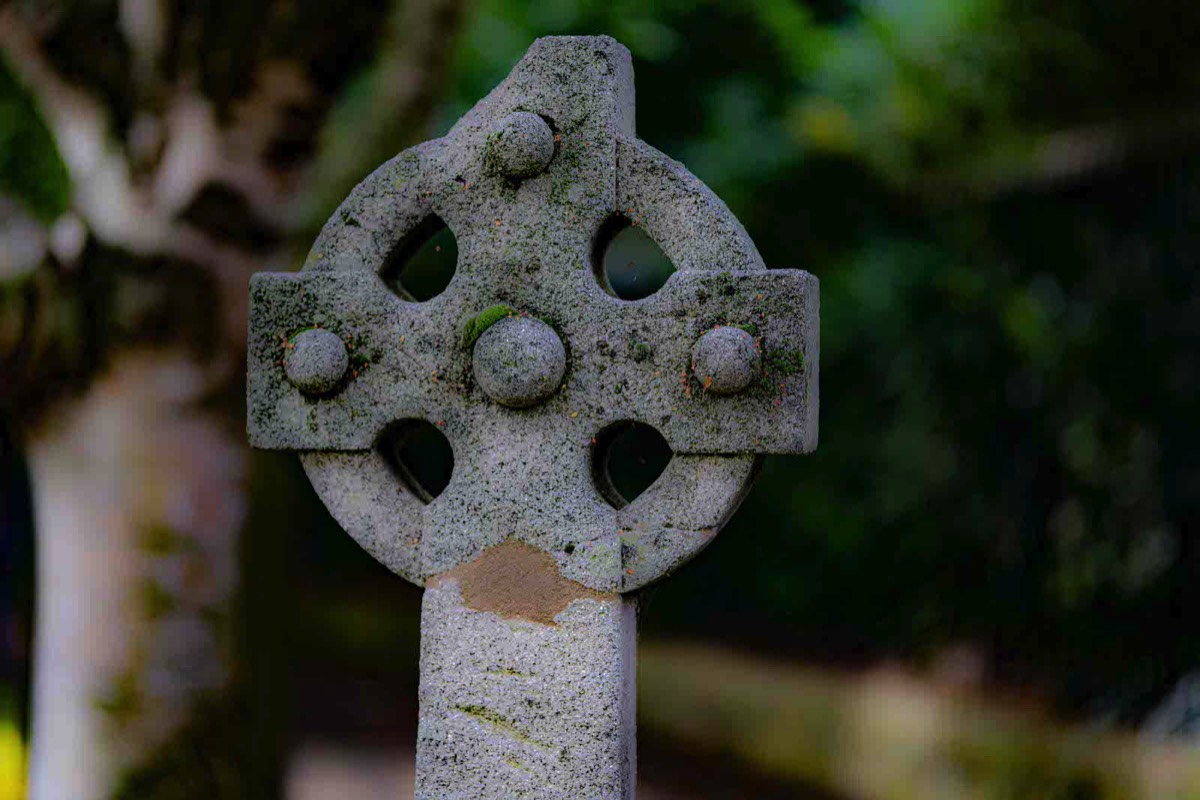
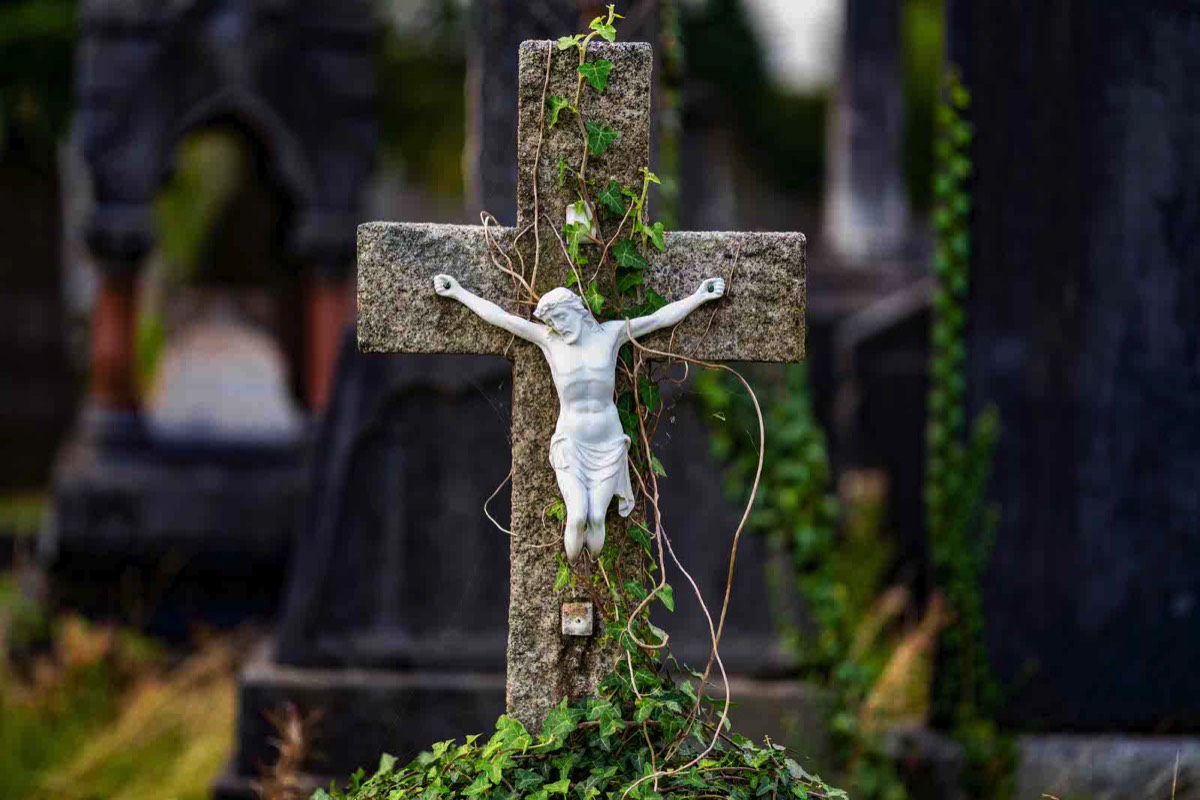
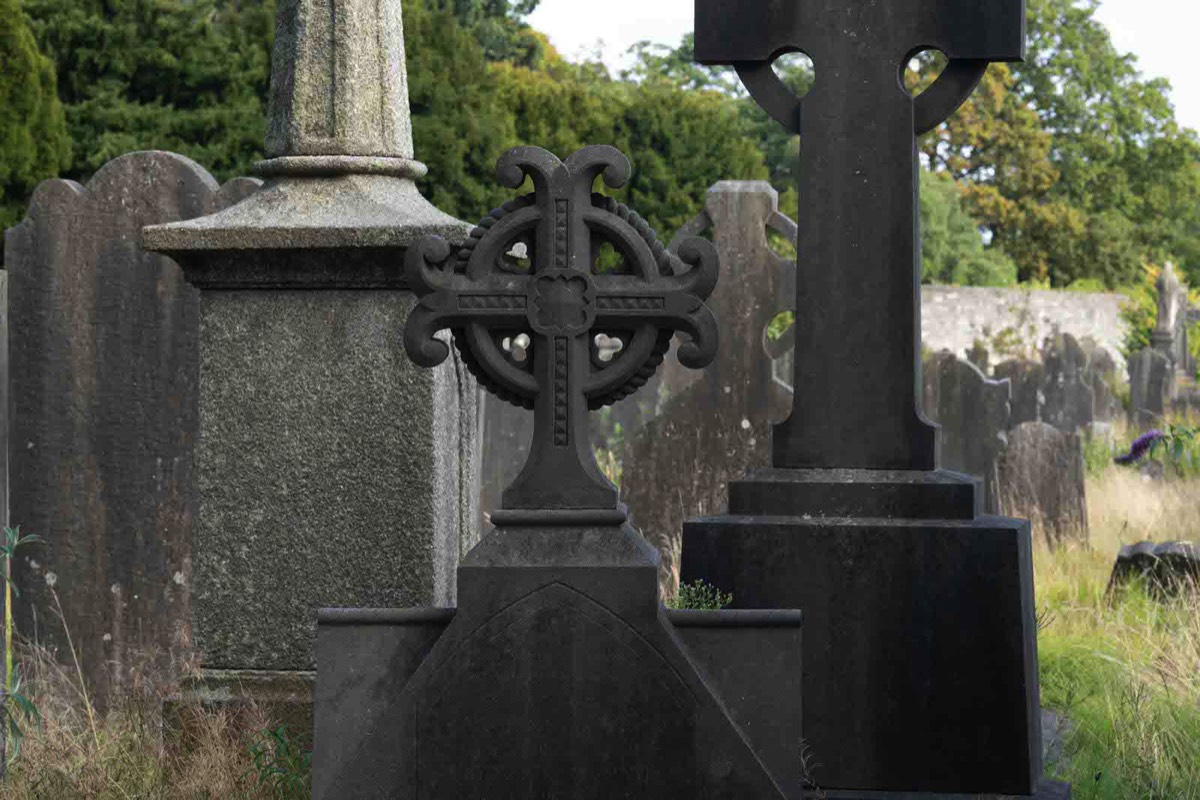
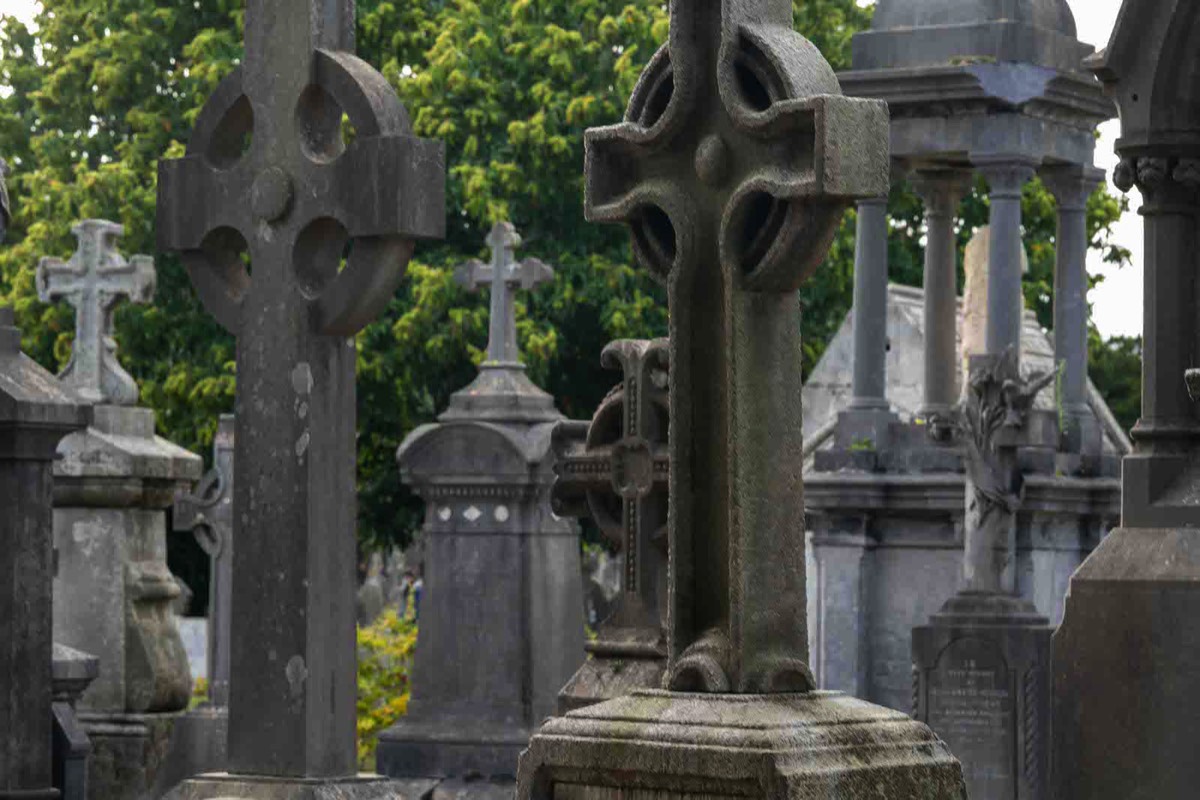
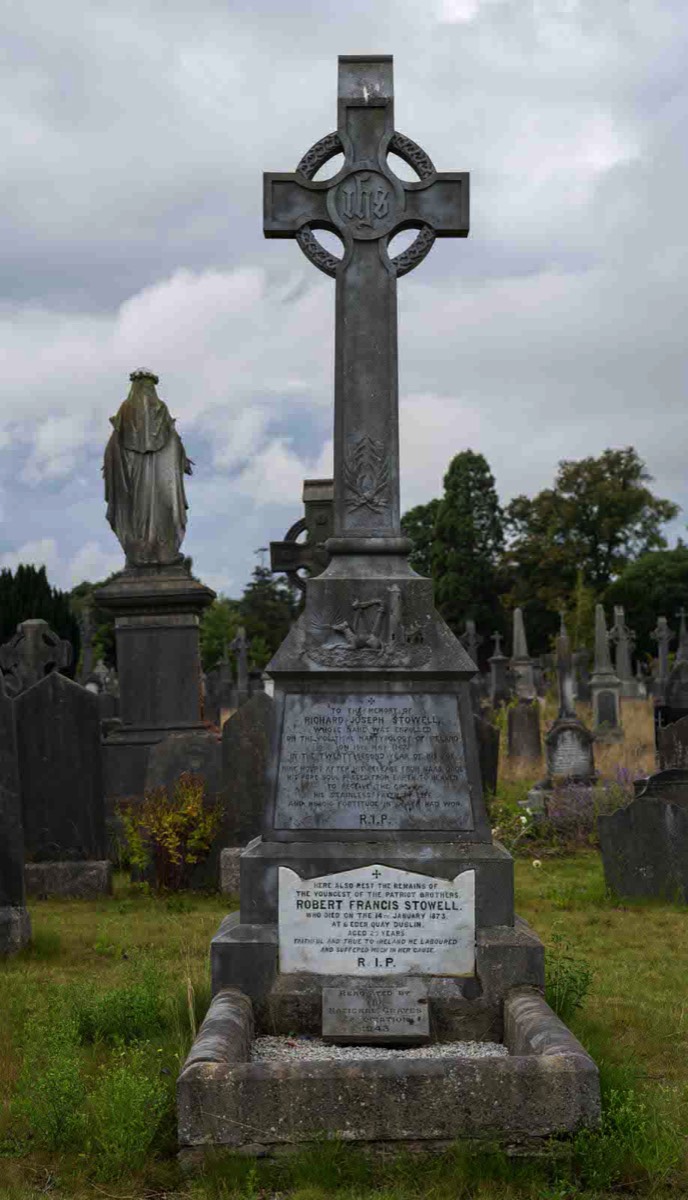
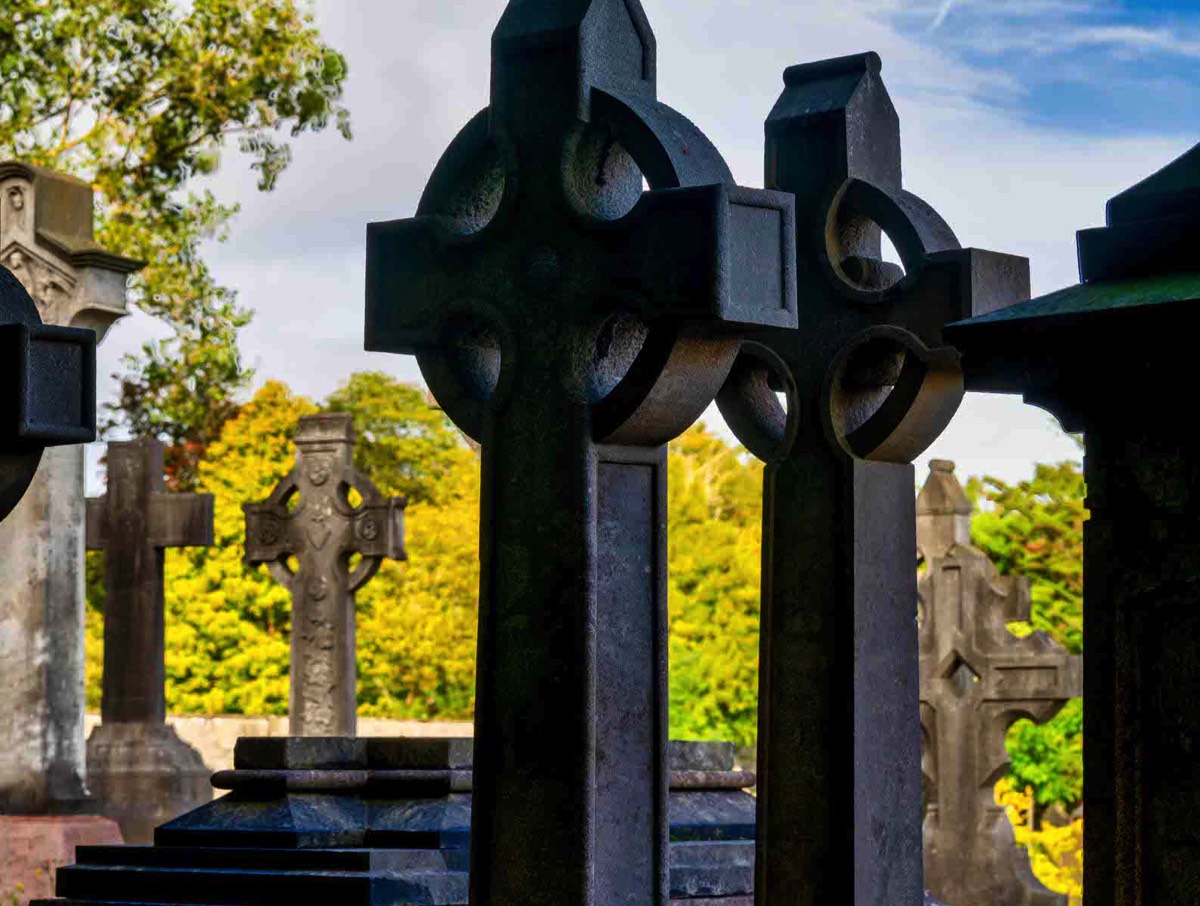
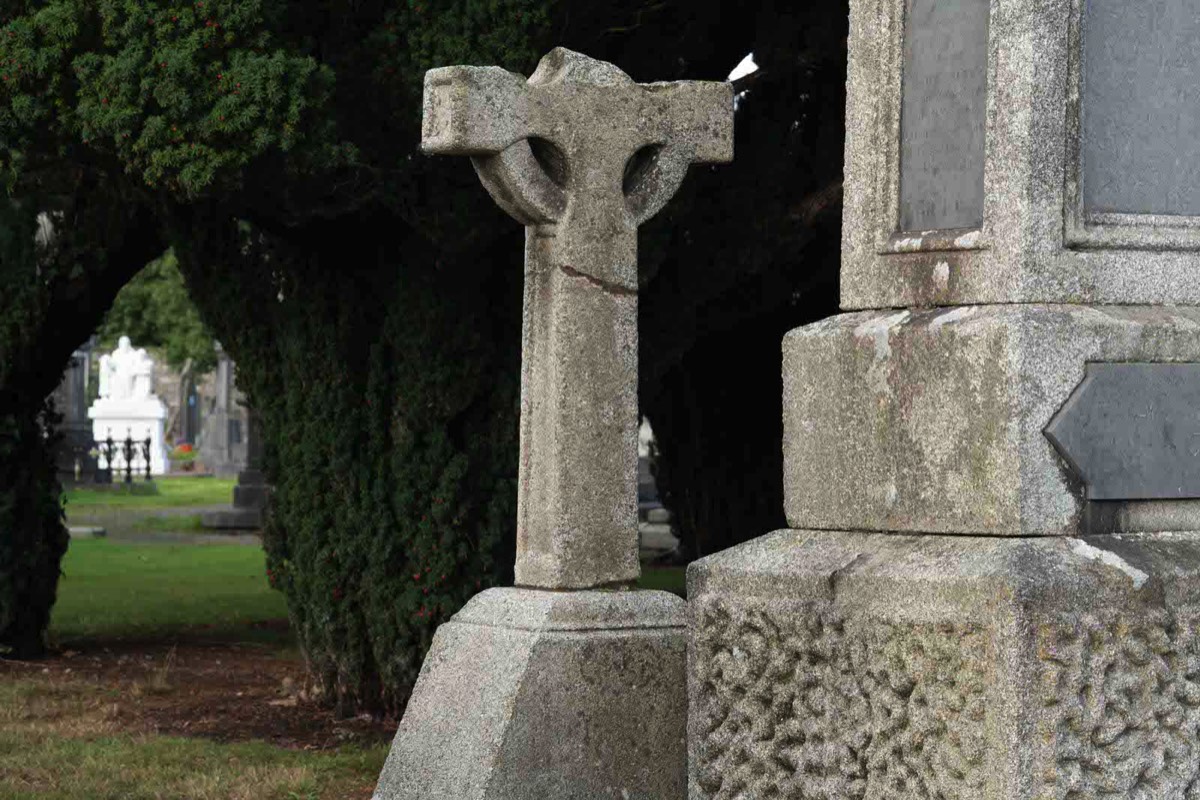
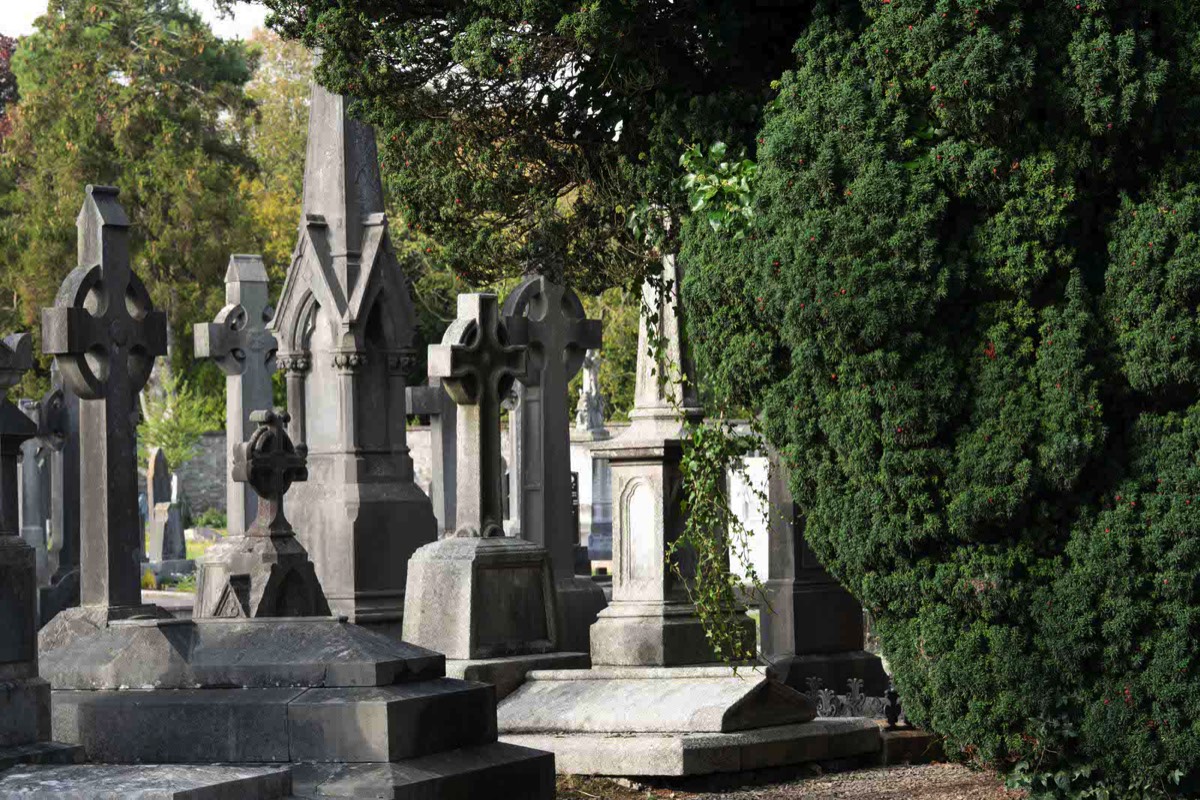
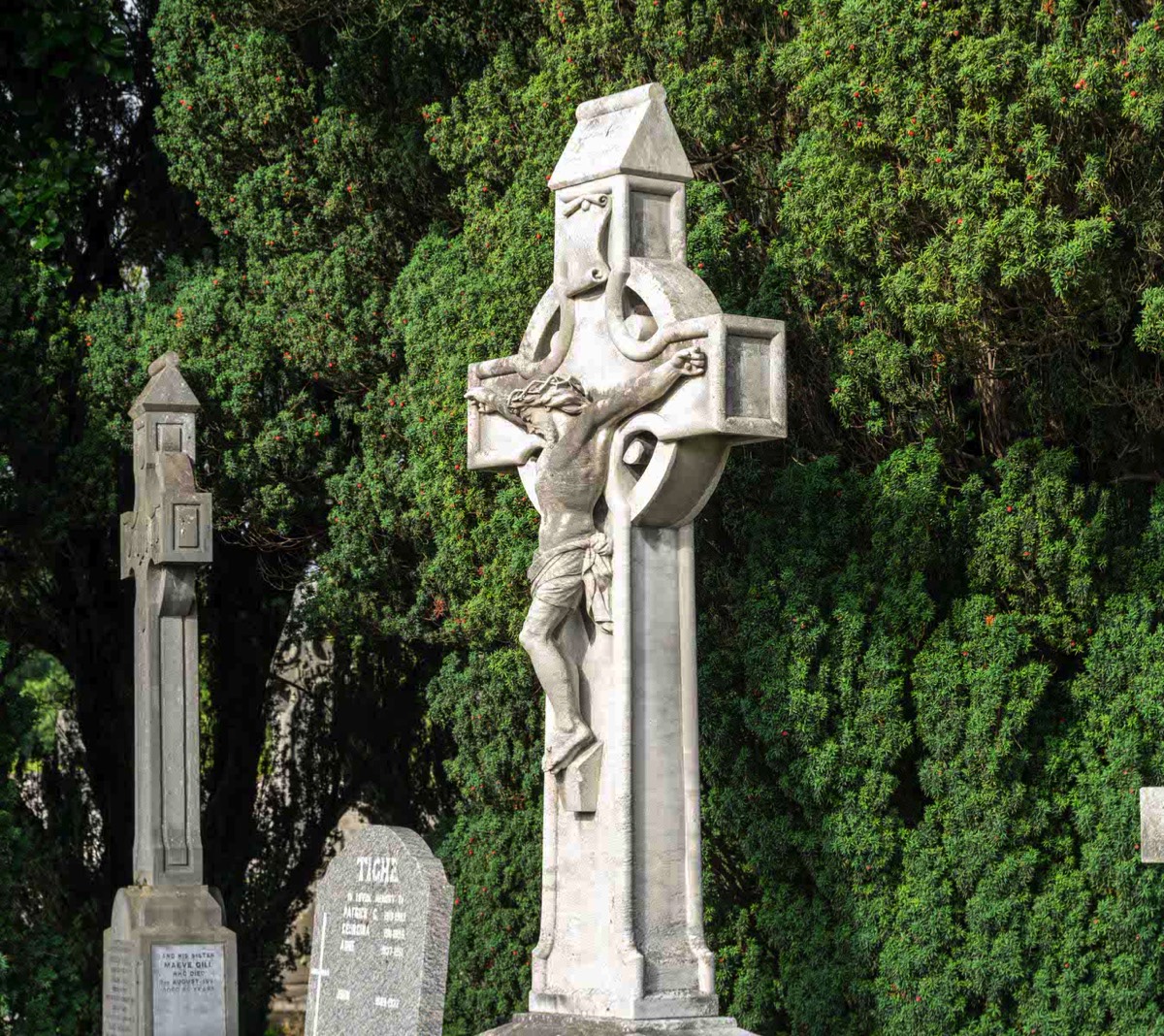
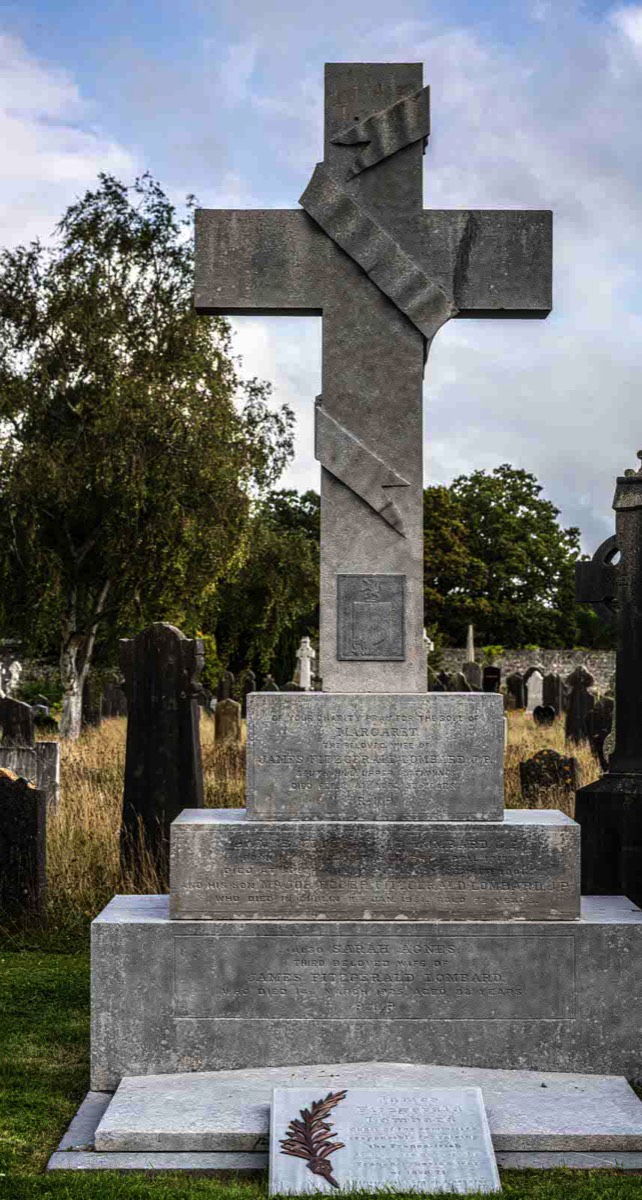
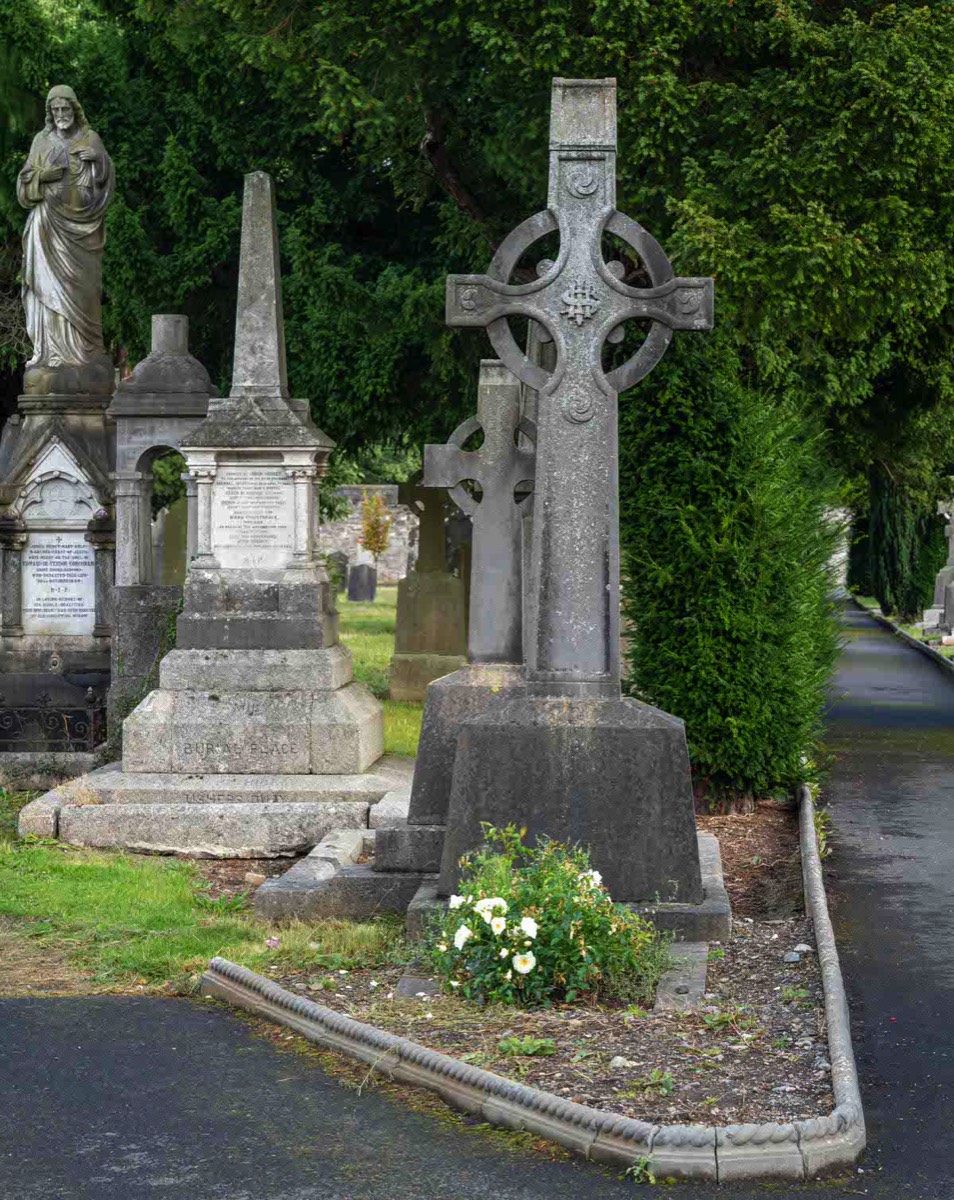
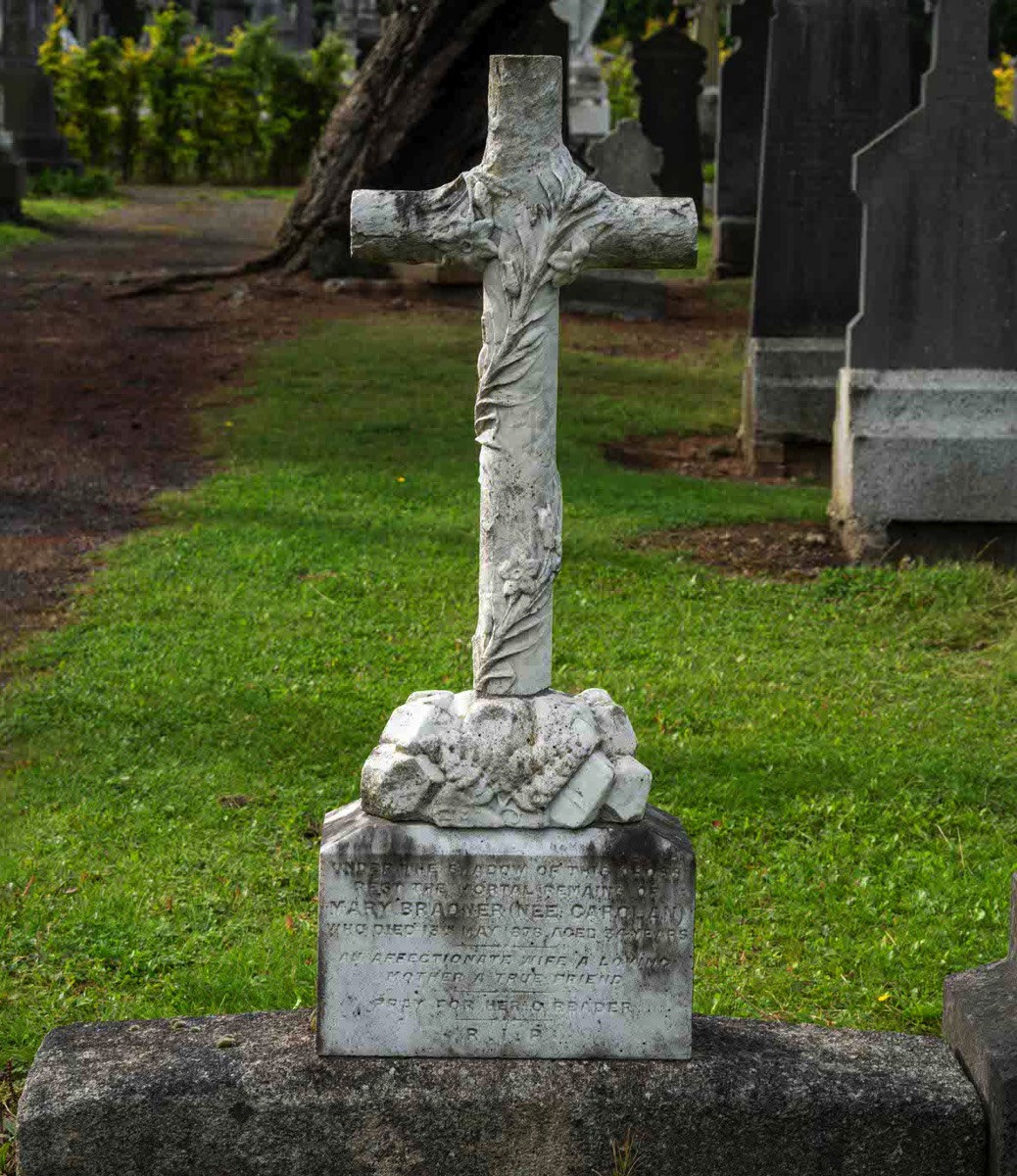
The cemetery is located in Glasnevin, Dublin, in two parts. The main part, with its trademark high walls and watchtowers, is located on one side of the road from Finglas to the city centre, while the other part, "St. Paul's," is located across the road and beyond a green space, between two railway lines. The Glasnevin Trust Museum was designed by A&D Wejchert & Partners Architects.
Prior to the establishment of Glasnevin Cemetery, Irish Catholics had no cemeteries of their own in which to bury their dead and, as the repressive Penal Laws of the eighteenth century placed heavy restrictions on the public performance of Catholic services, it had become normal practice for Catholics to conduct a limited version of their own funeral services in Protestant churchyards or graveyards. This situation continued until an incident at a funeral held at St. Kevin's Churchyard in 1823 provoked public outcry when a Protestant sexton reprimanded a Catholic priest for proceeding to perform a limited version of a funeral mass. The outcry prompted Daniel O'Connell, champion of Catholic rights, to launch a campaign and prepare a legal opinion proving that there was actually no law passed forbidding praying for a dead Catholic in a graveyard. O'Connell pushed for the opening of a burial ground in which both Irish Catholics and Protestants could give their dead dignified burial.
Glasnevin Cemetery was consecrated and opened to the public for the first time on 21 February 1832. The first burial, that of eleven-year-old Michael Carey from Francis Street in Dublin, took place on the following day in a section of the cemetery known as Curran's Square. The cemetery was initially known as Prospect Cemetery, a name chosen from the townland of Prospect, which surrounded the cemetery lands. Originally covering nine acres of ground, the area of the cemetery has now grown to approximately 124 acres. This includes its expansion on the southern side of the Finglas Road with the section called St. Paul's. The option of cremation has been provided since March 1982.
Glasnevin Cemetery remains under the care of the Dublin Cemeteries Committee. The development of the cemetery is an ongoing task with major expansion and refurbishment work being carried out at the present time.
The Catholic Mass is celebrated by members of the parish clergy every Sunday at 9.45 a.m. The annual blessing of the graves takes place each summer as it has done since the foundation of the cemetery in 1832.
Prior to the establishment of Glasnevin Cemetery, Irish Catholics had no cemeteries of their own in which to bury their dead and, as the repressive Penal Laws of the eighteenth century placed heavy restrictions on the public performance of Catholic services, it had become normal practice for Catholics to conduct a limited version of their own funeral services in Protestant churchyards or graveyards. This situation continued until an incident at a funeral held at St. Kevin's Churchyard in 1823 provoked public outcry when a Protestant sexton reprimanded a Catholic priest for proceeding to perform a limited version of a funeral mass. The outcry prompted Daniel O'Connell, champion of Catholic rights, to launch a campaign and prepare a legal opinion proving that there was actually no law passed forbidding praying for a dead Catholic in a graveyard. O'Connell pushed for the opening of a burial ground in which both Irish Catholics and Protestants could give their dead dignified burial.
Glasnevin Cemetery was consecrated and opened to the public for the first time on 21 February 1832. The first burial, that of eleven-year-old Michael Carey from Francis Street in Dublin, took place on the following day in a section of the cemetery known as Curran's Square. The cemetery was initially known as Prospect Cemetery, a name chosen from the townland of Prospect, which surrounded the cemetery lands. Originally covering nine acres of ground, the area of the cemetery has now grown to approximately 124 acres. This includes its expansion on the southern side of the Finglas Road with the section called St. Paul's. The option of cremation has been provided since March 1982.
Glasnevin Cemetery remains under the care of the Dublin Cemeteries Committee. The development of the cemetery is an ongoing task with major expansion and refurbishment work being carried out at the present time.
The Catholic Mass is celebrated by members of the parish clergy every Sunday at 9.45 a.m. The annual blessing of the graves takes place each summer as it has done since the foundation of the cemetery in 1832.
You will find links to buy products from Amazon, Google and other partners. If you click on these links, you’ll find that the URL includes a small extra piece of text which identifies that the click came from my websites. This text is an affiliate code, and it means that I get a small percentage of the money you spend if you choose to buy that product, or, in some cases, other products from the site soon after. These affiliate links help pay the costs of producing my websites and ensure that the content is free to you.
COPYRIGHT INFORMATION BELOW APPLIES ONLY TO PHOTOGRAPHS

This work by William Murphy aka Infomatique is licensed under a Creative Commons Attribution-NonCommercial-ShareAlike 4.0 International License.
Permissions beyond the scope of this license may be available at https://excellentstreetimages.com/in-the-year-twentytwenty/copyright/.
